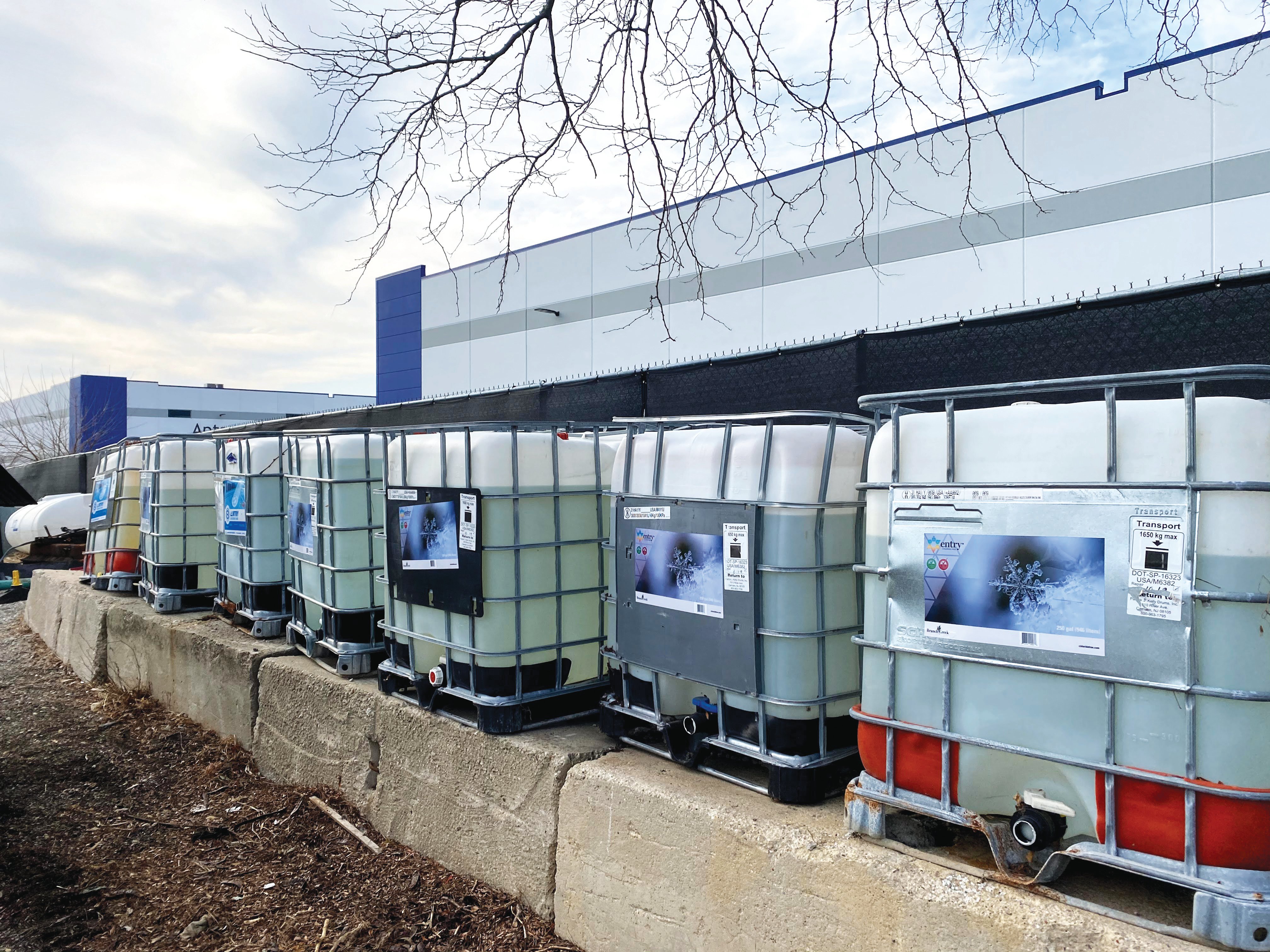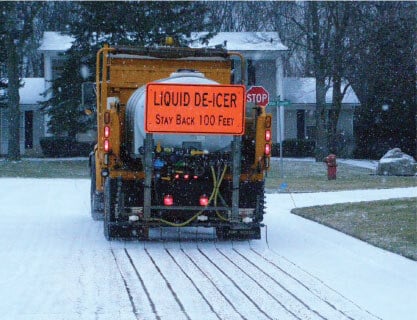Liquid deicing has long-term benefits
Liquid deicing has become increasingly popular in the commercial snow and ice industry, with adoption rates rising from under 10% in 2019 to nearly 40% in 2023. This article discusses the capital expenditure, labor costs, and return on investment associated with implementing liquid deicing.
Capital Expenditure (Capex)
The initial investment in liquid deicing equipment can be considerable. Compared to traditional deicing methods, liquid deicing requires specialized infrastructure: a brine plant, plumbing, storage tanks, a sufficient water supply, and, in some cases, a 220v power source to power the brine plant.
The cost of liquid deicing sprayers is also typically substantially higher than traditional V-box or tailgate salters. While the upfront costs may seem high, the potential for long-term savings and efficiency gains often outweigh the initial expenditure.
The good news is that there are now options for operations of all sizes. Compact brine makers that fill with a standard garden hose and plug into a standard wall outlet, and sprayers in a similar price range to higher-end salting units, are now available. It is possible to get into a compact brine maker, plumbing, and storage tank for under $10,000. The right fit for your operation may be to start with sidewalks, using a compact, inexpensive brine maker to make brine for your sidewalk equipment or you may dive in headfirst with a full-blown, enterprise-scale brine plant and a fleet of truck-mounted units. The decision on where to start comes down to your market, your business, and your customers’ demand for the use of liquids on their properties.
Labor costs
While there is "extra" labor involved on the front-end of using liquids (making the brine), the savings on the back end can be substantial. While the "extra" labor on the front end for making the brine can spook some contractors, many find that labor is often used during typical downtime and "shop hours" between snowfalls, when they are looking for work for their team members.
The application process for liquid deicers is generally more efficient, requiring fewer passes and substantially less material per acre compared to granular deicing products. With liquids, you have the flexibility to apply your pre-treatment days ahead of the storm, which buys you time before snow and ice start accumulating and will also achieve better traction with your trucks and loaders, making your plowing efforts more efficient.
Furthermore, brine can be loaded into sprayers without a loader, meaning that deicing truck operators can refill on site without the need for a large salt bunker or loader. Just set up a storage tank, hook up a hose, fill, and go! This efficiency translates into reduced labor hours and, consequently, lower net labor costs, ultimately leading to increased profitability.
ROI analysis
The ROI of liquid deicing is a crucial factor for any business considering this method. While the initial costs are higher, the long-term benefits can be substantial. In our experience, the ROI of using liquids on sidewalks is one season or less. This is a slam dunk for almost any snow business.
One customer we worked with in New Jersey converted their sidewalk teams to liquids. They had been using 13 tractor-trailer loads of bagged calcium chloride per year. In less than one season, they saved enough on product costs to pay for their entire liquid equipment investment. That is not to mention the positive feedback they got from their clients about how the sidewalks were less stained and "slimy" with the liquid applications, and how much cleaner their rugs, floors, and entryways were with liquids compared to the granular product.
The ROI of using liquids on parking lots can vary based on the market, customer demand, pre-treat vs. post-treat, etc. Typically, you can expect an ROI of 2-5 years in salt savings alone. Additional factors to consider include higher client retention (due to cleaner lots, no dead grass/landscaping, no tracking into buildings, etc.), upselling pre-treatment services to produce additional profitable revenue, and the ability to gain new clientele due to the quality and level of service differentiation you can achieve with liquids.
Jordan Smith is marketing manager for liquid deicing products at BOSS Snowplow and the owner of Storm Equipment. Jordan is also a snow contractor based in southern Minnesota and loves to talk about all things snow with other contractors. Contact him at jordan.smith@bossplow.com.



